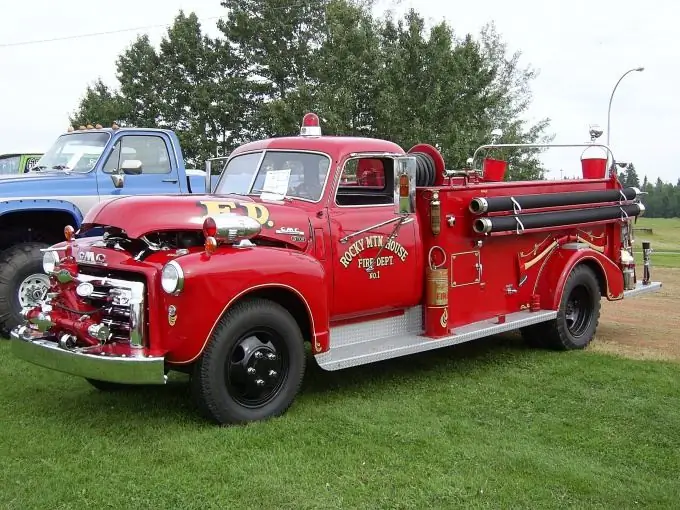Bench Modeling refers to the modeling industry that deals with stationary models for demonstration purposes only. Bench modelers build stationary scaled-downs of a wide variety of machines, from spaceships to conventional fire engines.

Instructions
Step 1
Take a close look at pictures of fire trucks on the Internet to get an accurate idea of what they look like. One of these photos is shown in the title of this article.
Step 2
Decide which fire engine design you are going to replicate in your model. In some of them, the cabin and body are connected into a single whole, while others have a gap between these nodes. Make the corresponding parts of the model from thick cardboard. Cover them with white paper and then paint them red. Just draw small details on them.
Step 3
Use white LEDs to simulate headlights and red and yellow to simulate taillights. Supply power to them from batteries through such resistors so that the current through each of the diodes does not exceed 20 mA. Be sure to add a switch.
Step 4
Use plywood to make the model's chassis. Use large caps from kefir bottles as wheels, painted them black, and tubes from fountain pens as axles.
Step 5
On the starboard side of the model body, place the shield to which the hoses are connected. For the hoses themselves, use ordinary cambric. Draw some buttons on the dashboard and place small (3mm) LEDs next to them.
Step 6
Glue the ladder placed on the roof of a fire engine from matches, from which you first separate the heads.
Step 7
To make the model of the fire engine more similar to the real one, do not forget about such details as numbers. Cut them out of an aluminum can, paint them with white putty used to correct the text. Once dry, write on with a thin felt-tip pen. Largely duplicate the rear number on the body doors using the same putty.
Step 8
Remember that all bench models are fragile and therefore not intended to be used as toys. To protect the model from dust, use a removable transparent cover of any design.






